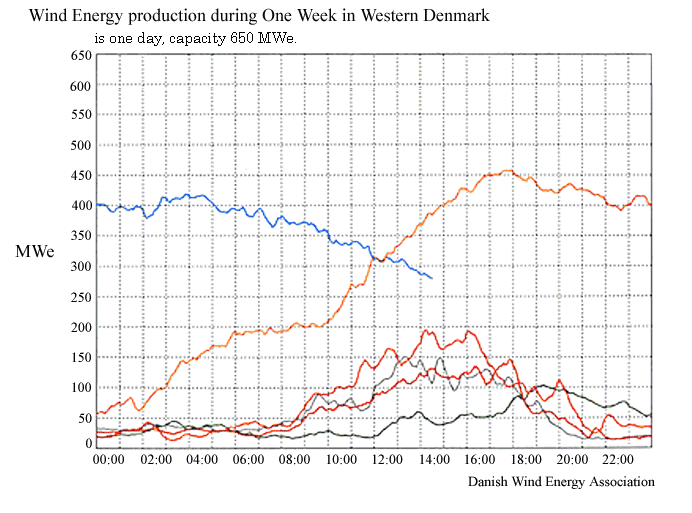Five ways to invest in solar and wind renewable energy
Post on: 16 Март, 2015 No Comment

37 shares
View
comments
If you want to profit from renewable energy but the thought of solar panels on your roof seems too expensive or a wind farm in your garden sounds too noisy, you could benefit by investing in a new breed of funds and trusts.
Energy companies are hitting the headlines again after price hikes have arrived in time for winter and part of the driving force for rising bills is the Government’s commitment to — and subsidies for — green energy.
The government is aiming to provide 15 per cent of energy from renewable sources in 2020, up from 3 per cent in 2009, and to do that it needs to subsidise solar, wind and other renewable energy sources.
Sun seeker: You could earn more than 6 per cent a year by investing in renewable energy
That means that there is a lot of opportunity for businesses providing solar panels and wind power sites. However, these do rely on continued government support for renewable sources and schemes such as feed-in-tariffs.
The government has a number of incentives for households and businesses to use renewable energy through feed-in-tariffs.
For example, the government is aiming to produce 20gigawatts of solar power capacity in the UK by 2020, but so far has only produced 2gigawatts.
This has created a solid investment for those willing to take subsidies for solar panels on their roof.
But if you’d rather not be lumbered with something so permanent, a fund or trust could help you tap into the investment idea.
On the one hand, you could get paid for energy produced through solar panels put on a residential or commercial building, which in returns help the government meet its carbon reduction targets.
Or you could invest in a business that is providing this power and benefit from their dividends.
Mick Gilligan, head of research for Killik, says: ‘What makes this area economically viable is the regulatory regime and the financial incentives to generate alternative sources of energy.
‘Because of that financial incentive the revenue stream versus the cost of building them makes financial sense
‘We have suggested investors put these types of funds or trusts in their portfolios as an alternative to fixed income.’
Mr Gilligan highlights four top funds and trusts to invest in solar wind and power below.
GOING GREEN: RENEWABLE ENERGY SUBSIDIES
The Government currently has a number of subsidies on offer to businesses and households for using and creating renewable energy.
These are:
The Renewables Obligation – Provides incentives for large-scale renewable electricity generation by making UK suppliers source a proportion of their electricity from eligible renewable sources.
Feed-in Tariffs scheme – Pays energy users who invest in small-scale, low-carbon electricity generation systems for the electricity they generate and use, and for unused electricity they export back to the grid.
Renewable Heat Incentive – Pays commercial, industrial, public, not-for-profit and community generators of renewable heat for a 20-year period.
Renewable Heat Premium Payment– Gives one-off payments to householders, communities and social housing landlords to help them buy renewable heating technologies like solar thermal panels, heat pumps and biomass boilers.
Renewable Transport Fuel Obligation – Makes companies that supply more than 450,000 litres of fuel per year source a percentage from renewable sources.
Invest in the UK’s sunshine
Bluefield Solar Income Fund
WHAT IS NAV?
Net asset value, or NAV, is the value of an investment trust’s holdings.
It is calculated by dividing the total value of assets (what it owns) minus liabilities (what it owes) by the amount of shares existing.
This is separate to a trust’s share price, which is what it would cost an investor to buy in.
An investment trust trading at a discount to NAV may be regarded as cheap because the shares cost less than its overall value — although there might be good reasons why, such as investors being justifiably pessimistic about its prospects.
When a trust trades at a premium to NAV it is more expensive than its net worth.
This is different to investment funds which do not have a separate share price and NAV.
Charges: 1 per cent of net asset value up to £100million, 0.8 per cent above £100m, 0.6 per cent above £200m.
Yield: 4.1 per cent
The Bluefield Solar Income fund aims to build a portfolio of solar energy assets, each located within the UK.
It will target long life solar energy infrastructure, expected to generate stable renewable energy output over a 25 year asset life.
It has acquired four solar plants so far since launch in July, the latest in Oxfordshire constructed by Solarcentury.
The fund’s total investments are worth £55.3m
Launched in July, the company is targeting a return of 4 per cent in the first year, rising to 7 per cent in the second year, and then increasing its returns in line with retail price index each year.
It is currently trading at a 1.7 per cent premium to net asset value.
Invest in British and European sun shine
Foresight solar fund
Charges: 2 per cent set-up charge, 1 per cent annual management charge.
Dividend yield: Only listed in October
The Foresight Group has raised £150m for a solar fund that has listed on the London Stock Exchange. It listed on Tuesday 29 October and the price is hovering at just over 100p.
It is targeting a 6 per cent annual dividend.
While the product is called a fund, it will work as an investment trust, meaning the usual system of share price and net asset value applies.
The trust will invest in UK-based solar power plants predominantly in the UK.
Investments outside the UK and assets which are still under construction will be limited to 25
per cent of the value of the company.














